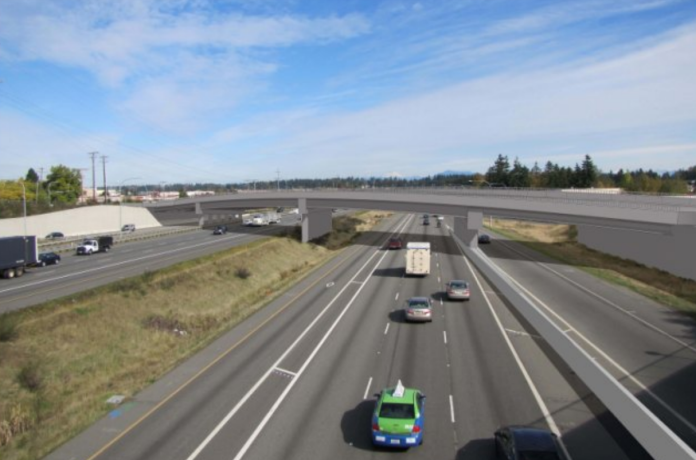
Last week, the US Department of Transportation (USDOT) announced 166 projects that have been selected to receive $2.2 billion dollars in Federal funding through the Rebuilding American Infrastructure with Sustainability and Equity (RAISE) grant program. One of USDOT’s largest discretionary grant programs, the awards are highly coveted. Due to an increase in funding for the RAISE program from last year’s Infrastructure Investment and Jobs Act (IIJA), the amount for awards is more than double the amount that was available in 2021 and will stay at that level for approximately another four years.
The Biden administration is touting the fact that the overall projects picked for awards are looking more “holistically” at the nation’s transportation system, as assistant secretary for transportation policy Chris Coes put it when the awards were announced.
“This round, we saw an allocation [where] about 52 percent of our funding [is] going to roadways, but a very significant number of those projects included Complete Streets elements,” he told Streetsblog.
National transportation analyst Yonah Freemark looked at how the Biden administration allocated the 2022 RAISE grant awards and found that just 10% of the dollar amounts this year are set to fund projects that build new roadways or expand existing ones. That’s essentially the same amount as during the first year of the Biden administration, even with the increased amount of available funds. Compare that to just shy of 50% of available funds allocated by the Trump administration as part of the processor to RAISE, the BUILD program.
But for projects awarded funding in the Puget Sound region, a larger share of the dollars will be headed to projects that expand general purpose roadway capacity, as USDOT touts the shift in funding priorities that the overall RAISE grant awards represent. Out of the 10% heading to projects that expand roads nationally, just shy of 20% of that amount is heading to the Seattle metro area for two projects in Snohomish County that will add additional capacity to the roadway system.
Lynnwood’s Poplar Way Bridge
One of the two largest awards announced for Washington cities is a $25 million grant — the largest available — for the Poplar Way bridge over I-5 in Lynnwood. The City of Lynnwood has been seeking funding for this project for quite some time, with a 2007 study that the city completed in conjunction with WSDOT on possible transportation improvements that could benefit Lynnwood’s Center City neighborhood, where the soon-to-open Link light rail station is located — and where Lynnwood city council members are divided on the issue of adding more residents close to transit.
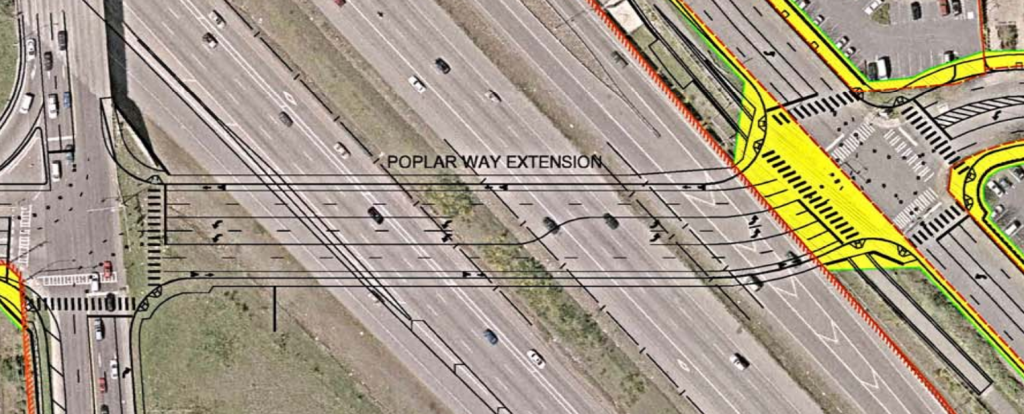
“The project will alleviate congestion and backups on the 196th Street SW off- ramps and overcrossings, thereby helping improve safety in and around the operations of I-5,” the USDOT fact sheet announcing the grant noted, calling the bridge “multimodal.” How multimodal is it? The six new 11-foot lanes on the bridge take up a majority of the space, with five-foot, paint-only bike lanes added along the curbs. Two seven-and-a-half foot sidewalks, nearing the minimum standard for a sidewalk without a buffer from traffic, will compliment both ends. It’s coming close to an affront to the English language to call this project multimodal.
Ultimately, this is not surprising coming from a city that is also calling a road expansion from five to seven lanes through the middle of Lynnwood City Center “multimodal.” But it’s a clear outlier among many of the other RAISE grants nationally, and that’s not something for the Puget Sound region to be proud of.
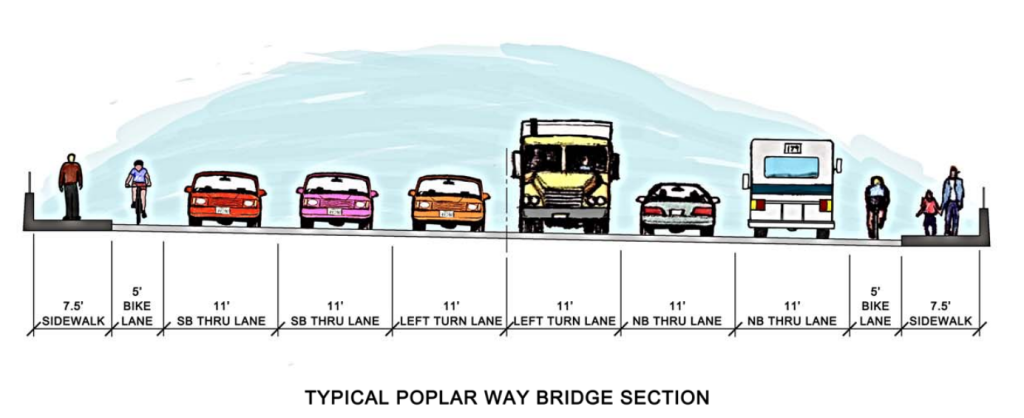
Not only is a new bridge part of this project, expanding many of the nearby roadways to squeeze in more lanes is also included, with virtually no additional walking or biking space added with those widenings. The Interurban Trail, which runs along Alderwood Mall will be modified to run underneath the new bridge, but it won’t be much improved by this change, and the overall safe cycling network that connects to it won’t be modified at all with this project.
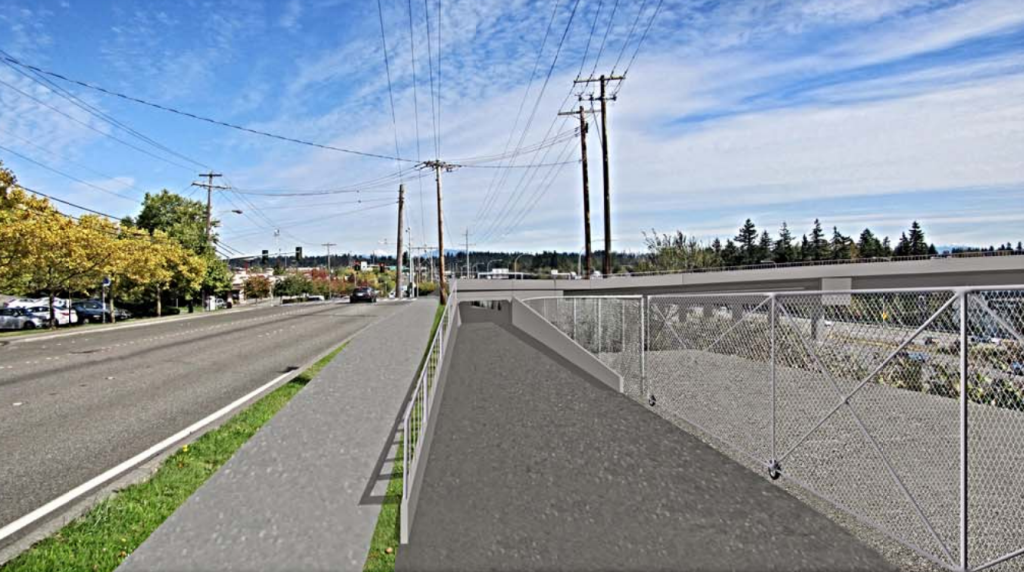
Bothell Way NE widening

Not far from the new Poplar Way bridge, the City of Bothell is set to get $19 million from RAISE for a widening of Bothell Way between Reder Way and 240th Street SE. Just north of Downtown Bothell, Bothell Way narrows to one lane in either direction with a center turn lane in places, and paint bike lanes along the side of the street. A state highway, SR 527, Bothell Way has been eyed for widening by both Bothell and WSDOT since at least 1994, when the two entities created a route development plan for the corridor.
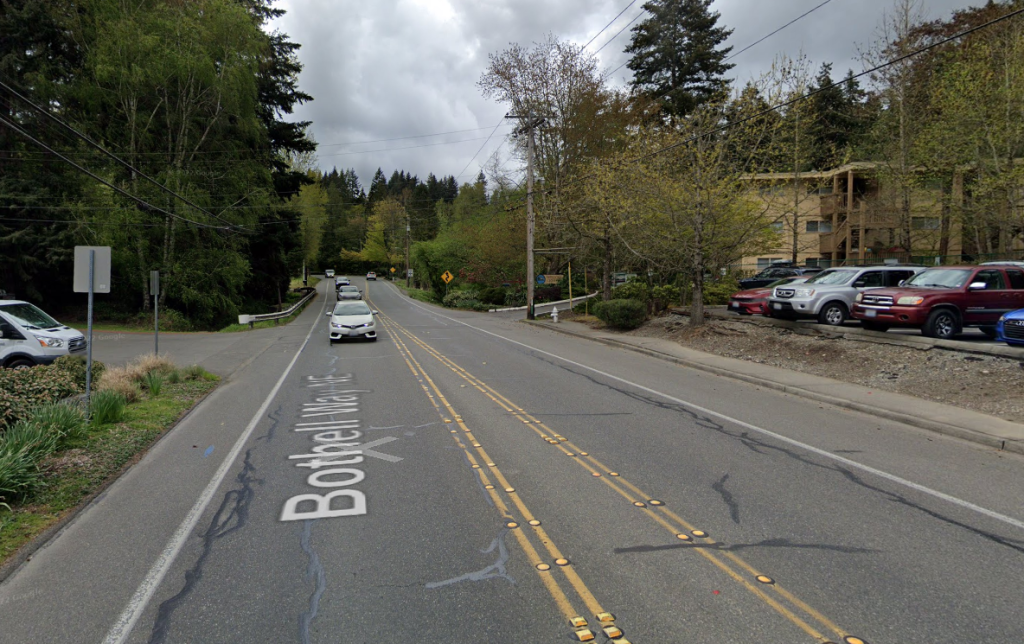
The widening project would add one lane in either direction, bringing the total to five with the center turn lane, and upgrade sidewalks along the corridor. The paint bike lanes would be upgraded to fully separated lanes — one of the few protected, on-street facilities envisioned by the city in its long range bicycle plan.

The widening is also intended to enable the Community Transit Swift Green Line, which currently doesn’t run any further south than Canyon Park, to be extended into downtown Bothell, further enabling that area to become a transit hub. But the added lanes are not proposed as dedicated transit lanes, and the City of Bothell, in seeking grants for widening Bothell Way, touts the additional capacity they are adding to the roadway. Requesting funding for the project from the Puget Sound Regional Council, Bothell cited a projected increase in daily traffic on the street from 17,800 to 36,400 by 2040. Of course, that increase likely wouldn’t even be possible without expanding the roadway.
Bothell leaders trying to advance transit and multimodal infrastructure in the city appear to see the widening of Bothell Way as a necessary pill to take to advance the project’s positive elements.
“This investment will deliver critical safety, mobility, and livability benefits for all of our residents and businesses, many years ahead of schedule,” Mayor Mason Thompson, not typically a cheerleader of expanding road capacity, was quoted as saying in a press release from Representative Suzan DelBene touting the award.
Transit projects left out
Even though Washington was second in the nation in number of RAISE grants awarded, with seven total projects across the state, no funding was provided for any public transit projects in the Seattle-Tacoma metro area, a surprising fact given the extra allocation provided via the IIJA.
Both King County Metro, which applied for funds for expanding its south bus base, and Sound Transit, which asked for funding for the Tukwila International Boulevard station in its I-405 Stride Bus Rapid Transit project, were passed over for RAISE grant funding — the second time since both agencies had submitted applications for the same project in last year’s round. Transit projects regionally have traditionally been able to advantage of the predecessor programs to RAISE: In 2011, Sound Transit was awarded a $10 million grant to complete Angle Lake Link light rail station.
The City of Seattle, as we reported earlier this year, did not submit any applications for a RAISE grant, citing the fact that the city was awarded funding for the East Marginal Way improvements project last year as a reason why they were unlikely to be picked again. But it’s also very unclear when the city will have its next large capital project ready to apply for grants like RAISE to take advantage of the increased federal funding. Bus corridor upgrades that have been dramatically scaled back would seem like prime opportunities, but that doesn’t seem to be a priority of anyone inside the Harrell administration, at least at this time.
With the expanded RAISE program representing such an invaluable opportunity for cities to move forward projects that they might not otherwise be able to realize, here’s hoping that future award lists for the central Puget Sound can more fully manifest the region’s goals around reducing vehicle miles traveled by fully focusing on transit, walking, and rolling infrastructure.
Ryan Packer has been writing for The Urbanist since 2015, and currently reports full-time as Contributing Editor. Their beats are transportation, land use, public space, traffic safety, and obscure community meetings. Packer has also reported for other regional outlets including BikePortland, Seattle Met, and PubliCola. They live in the Capitol Hill neighborhood of Seattle.

